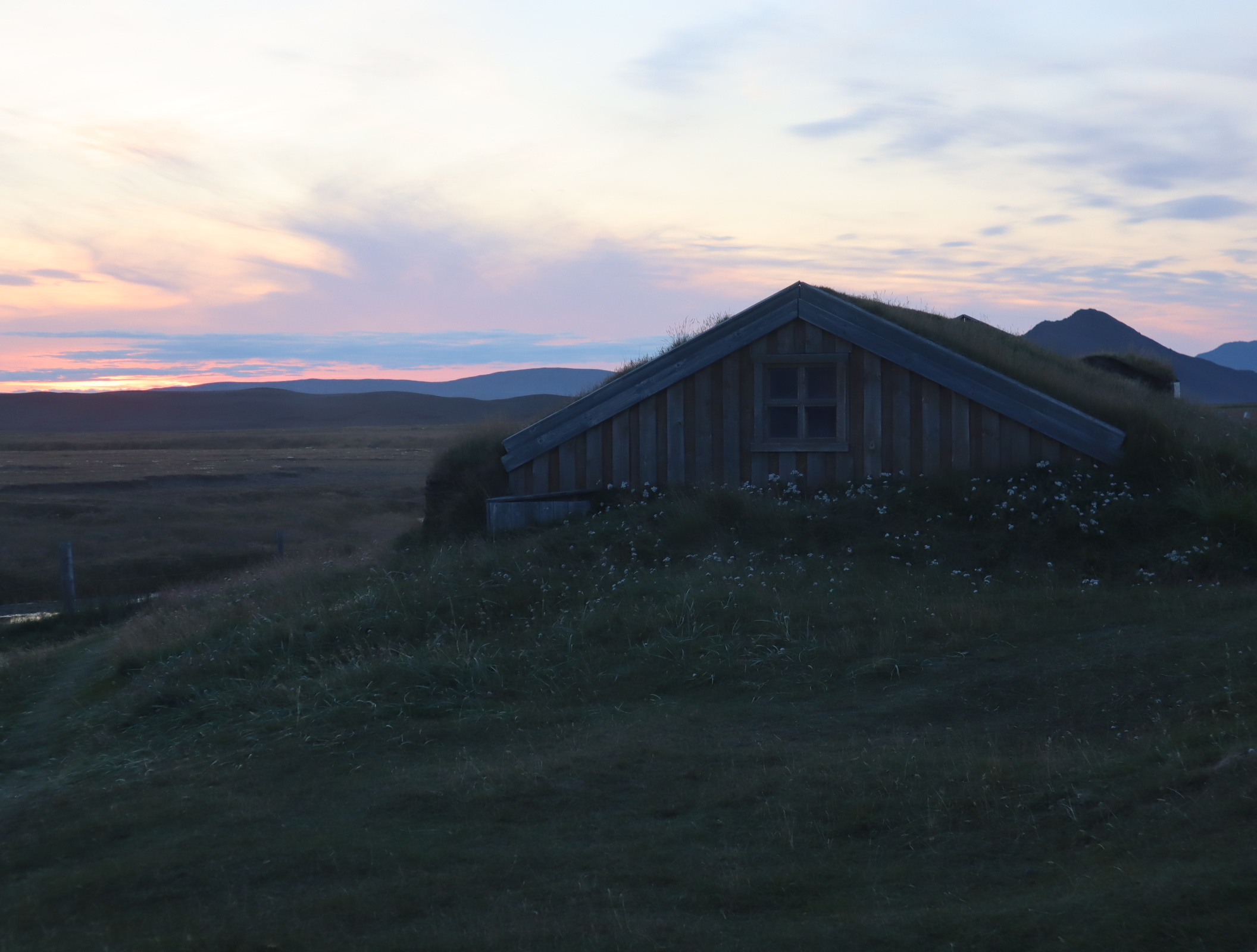Why your Iceland itinerary should include a stay at Fjalladyrð- Iceland’s highest settled farm
Of all the paths you take in life, make sure a few of them are dirt.
John Muir
Tucked away in Iceland’s highlands is the charming Fjalladyrð, located on the historically significant Möðrudalur farm, Iceland’s highest settlement. From the moment I arrived I knew this one of a kind stop was special. During my last stay in Iceland, I was lucky enough to spend two nights here in my camper. It was a memorable experience filled with peaceful scenery, turf houses, and delicious locally sourced Icelandic faire.
I even made friends with a sheep and got to watch Arctic foxes play in the morning! When I began this site I knew I had to write about Fjalladyrð. It was a memorable stay and here is why you should make Fjalladyrð part of your Iceland itinerary.
THE ICELAND SURPRISE
One of the many things I love about Iceland is what I refer to as her surprises that I discover when on the road there. There is never a drive that does not include an unexpected stop. Whether it’s to photograph grazing sheep, admire a hidden waterfall, or captivating vista, they are all gifts. This is why I tell people if your drive time says one hour, plan on two, because you will almost always find something else of interest on the way! (It is important to note, please do not pull over and park in undesignated areas and no off road driving. This is to protect the sensitive flora and vegetation that damages easily and takes years to grow).
During my travels this visit, Fjalladyrð was a welcomed surprise for this weary traveller.
This was my fifth time in Iceland and my third exploring the country via camper van. I always leave with an itinerary, a general idea of what I will be doing each day and a campsite list. To my delight this always changes as I discover new gems. This was the case with Fjalladyrð.
I had already been in Iceland for ten days and on my way from the Northern country towards the East with a stop at Stuðlagil canyon. Since I had arrived in the country, I had been on the go, driving sometimes six hours a day to reach a destination. I don’t remember how but I stumbled upon Fjalladyrð’s website describing its campground as peaceful, and “away from it all.” Upon reading its description I knew I had to include it. Besides that, the turf house picture sold me. The Icelandic turf house is the quintessential Icelandic image. Not only are they charming, but a staple of Iceland’s history and symbols of survival and innovation.
The campground looked unique and as I negotiated the road through the wilderness towards it, I could see why. Iceland’s landscapes always always manage to impress me, this area was no different. Layers of mountain peaks framed vast volcanic fields. So much “nothing”, yet filled with beauty!
The sun was setting, which made the scenery even more dramatic. A sky colored red, purple, blue, and pink framed the peaks. It was breathtaking. Iceland was once again, saying, surprise, look how beautiful I can be, even in the middle of nowhere.
I drove for awhile, the only camper on a mountainous, gravel road. At one point I pulled over to make sure I was going in the right direction. How could a farm be in the middle of “nothing?”
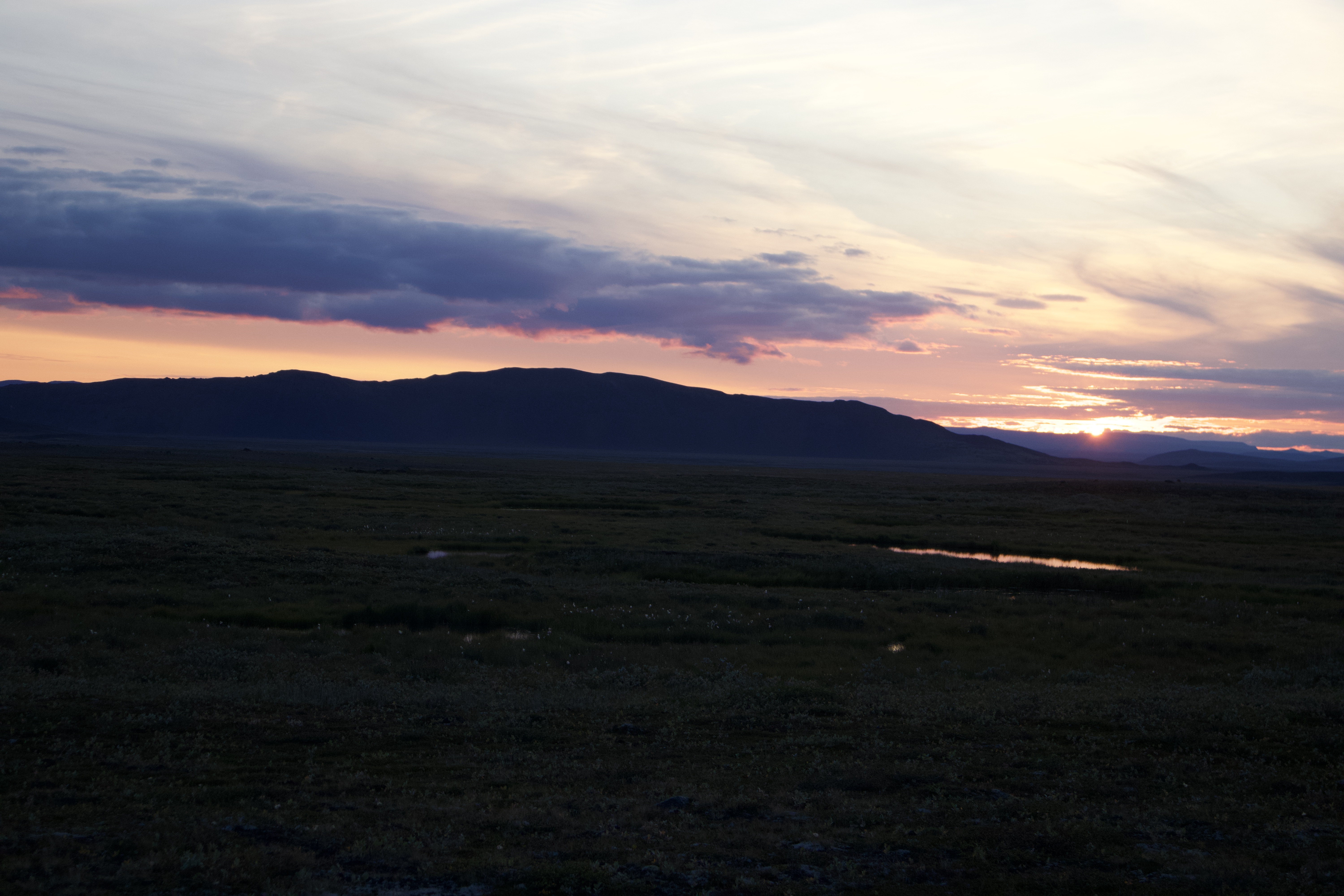
It is worth mentioning I was approaching from Stuðlagil canyon, which means longer time on a mountainous gravel road than from the ring road (Route 1) Don’t let the journey from this direction intimidate you, it’s worth it and the scenery is captivating! You will also pass the junction for the F road to Áskja- a famous volcano.
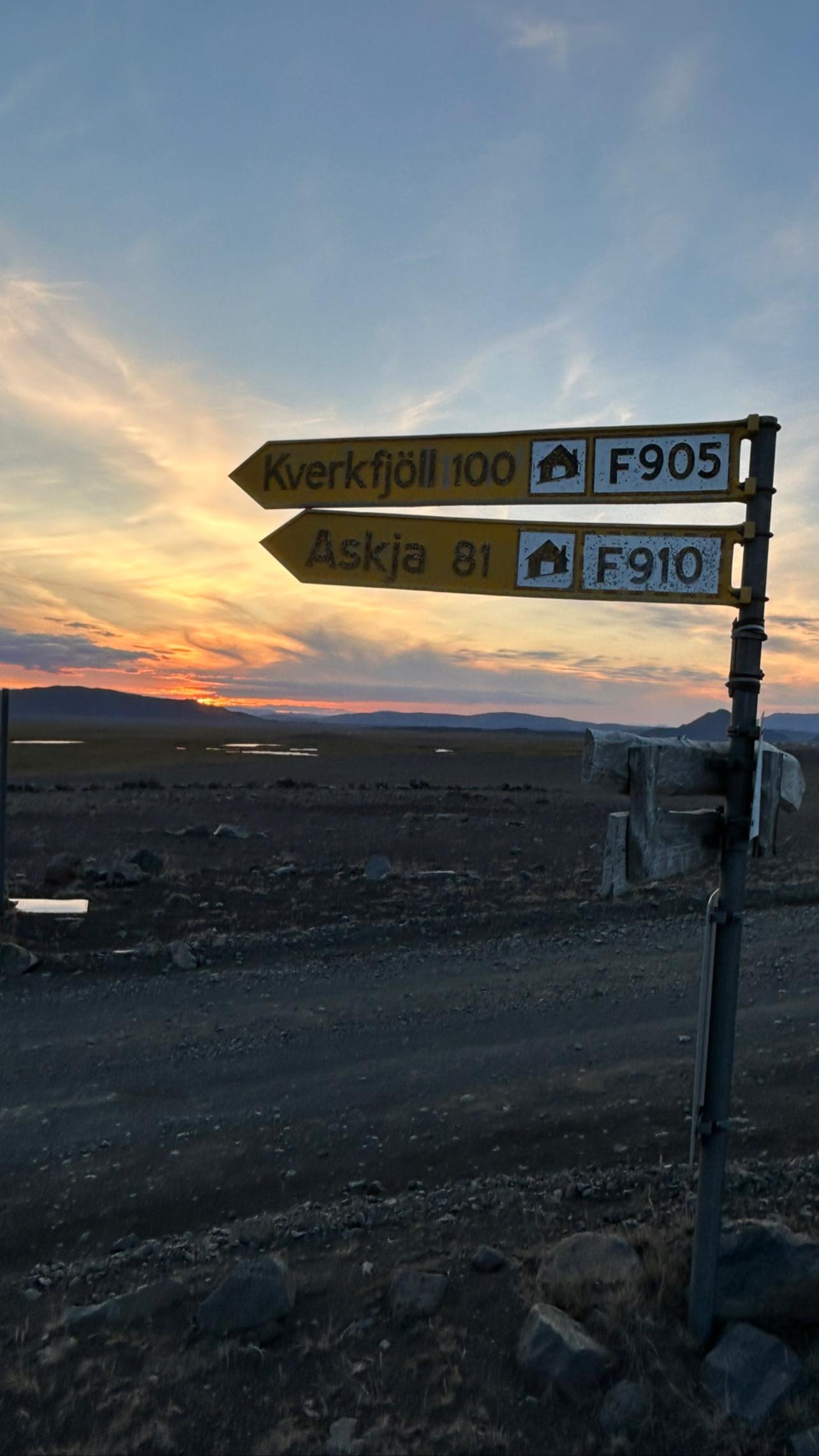
When I arrived, a picture perfect scene greeted me. This farm was an oasis. Turf houses placed here and there provided the perfect traditional feel. It was comforting, yet still wild and I loved it. The campground is behind the reception located in Fjallakaffi, the cafe and restaurant located on the property.
I parked the camper in the second lot across from the reception. In the distance, behind the campground, a snow-capped mountain stood tall in the deserted Odadahraun lava field. She is referred to as the “Queen of the Highlands.” Her name is Herðubreið, a stapi mountain, or ‘table mountain’ and was formed beneath a glacial sheet. She earned this name due to her unique shape and was voted Iceland’s mountain in 2002.
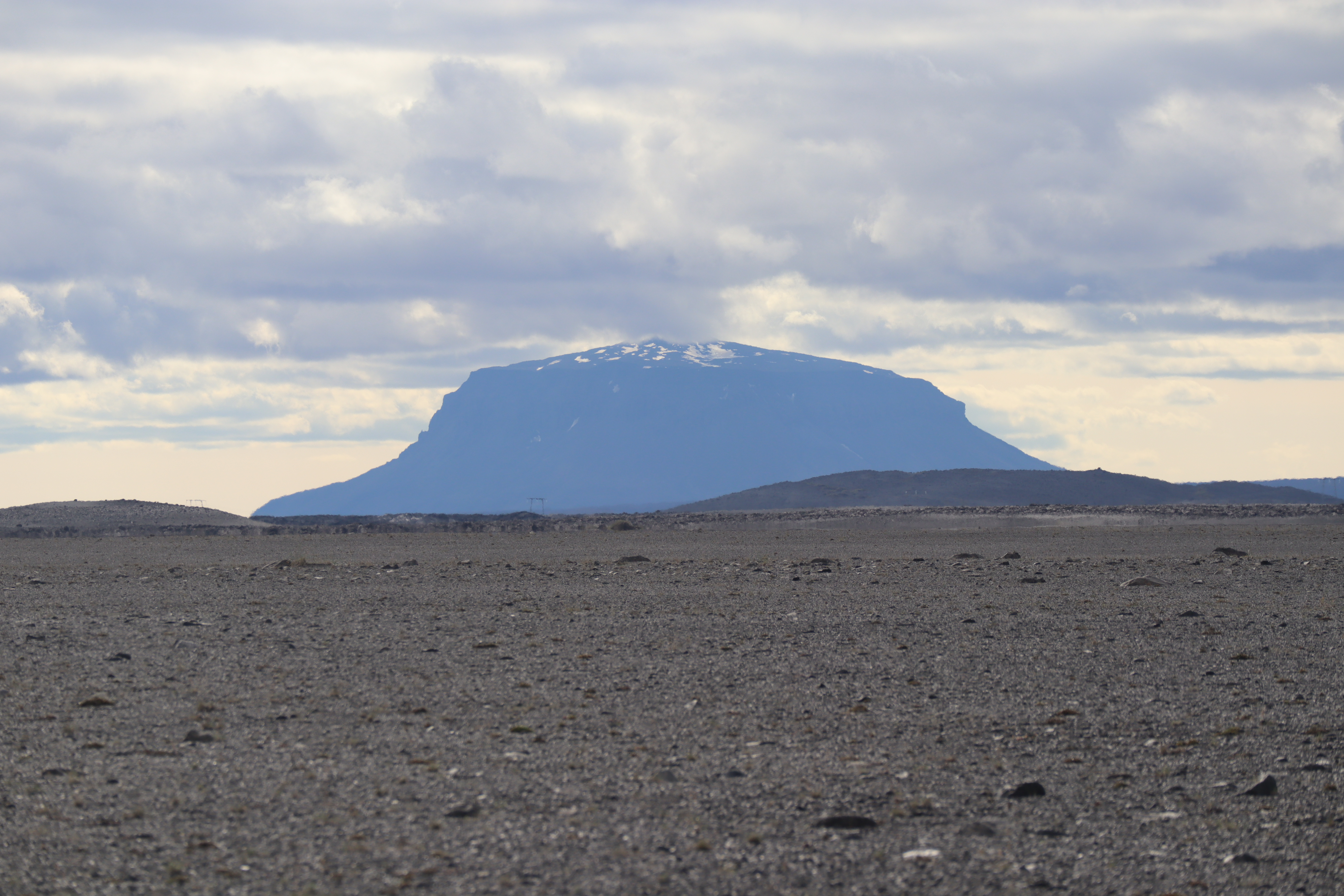
After checking in with reception I settled in for the night. A stream separated the open space from the campground and its sound soothed me to sleep.
The next morning I decided to explore the grounds a bit. The sun was rising and once again the sky offered a beautiful backdrop to the mountains. During my walk I was approached by a sheep, who over my two day stay, became a regular morning greet for me. A family of Arctic foxes played next to the reception house, completely uncaring about any witnesses. That morning I spent two hours lying in the grass (ignoring my grumbling stomach) photographing them.
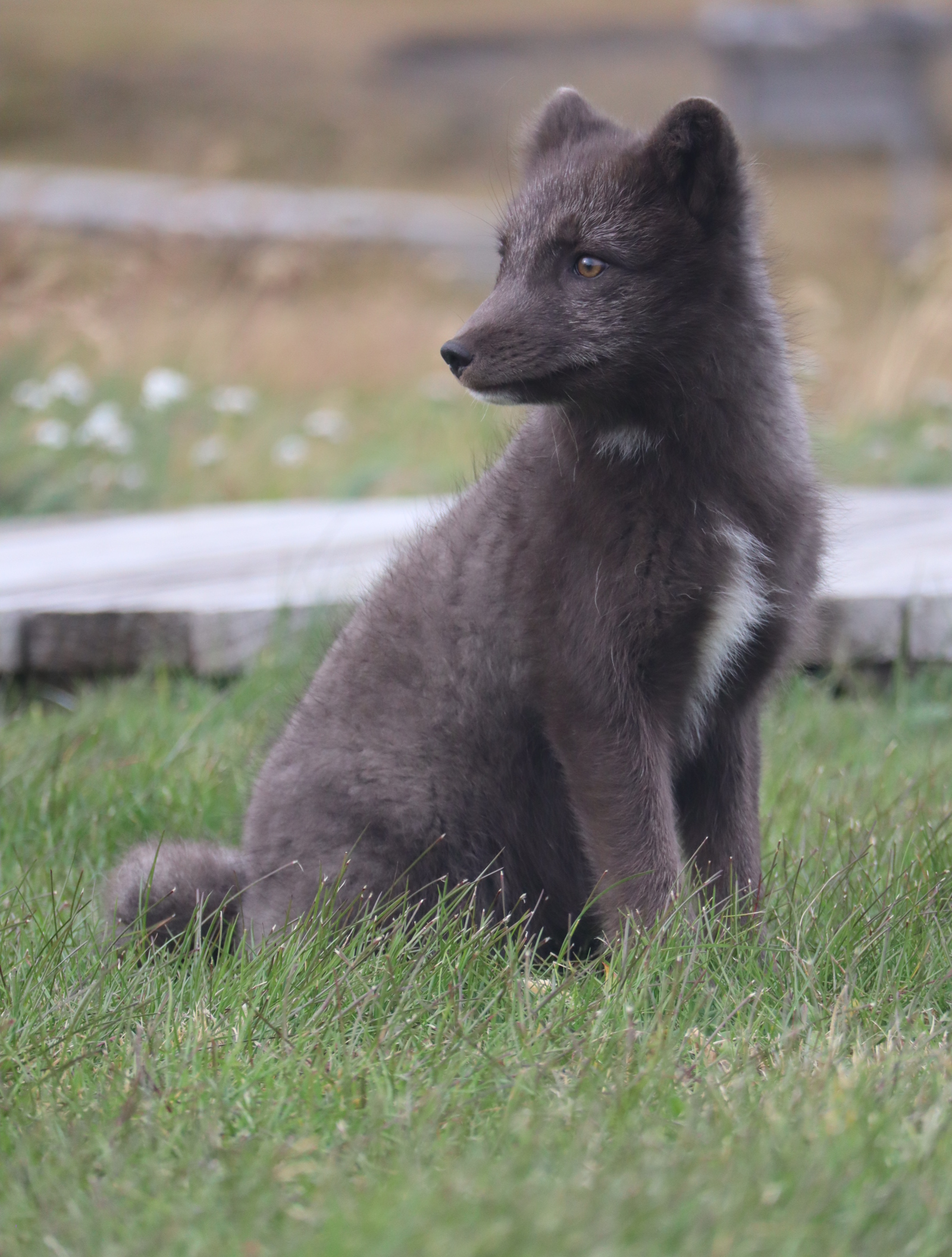
The day passed, the sun was shining, the grounds were peaceful, and I heard a storm was moving through the south. So I decided why move? I stayed a second night, content with the setting and ample ability for photographs.
Over the course of my stay I met a lovely Australian couple, a women from California who was curious about camper van life, and the owner, Villi. Him and his wife Elizabet are the reason why Möðrudalar survived. I will talk more about that in the history section.
Fjallakaffi is a lovely café located on the farm which serves traditional homemade Icelandic faire. I suggest the Ástarpungar, or love balls, a round donut with raisins. I was addicted to them! The cafe also offers an assortment of books on Icelandic history, photography, and recipes.

The café is known for its locally sourced food. Everything from the lamb, to the arctic char and goose is locally sourced.
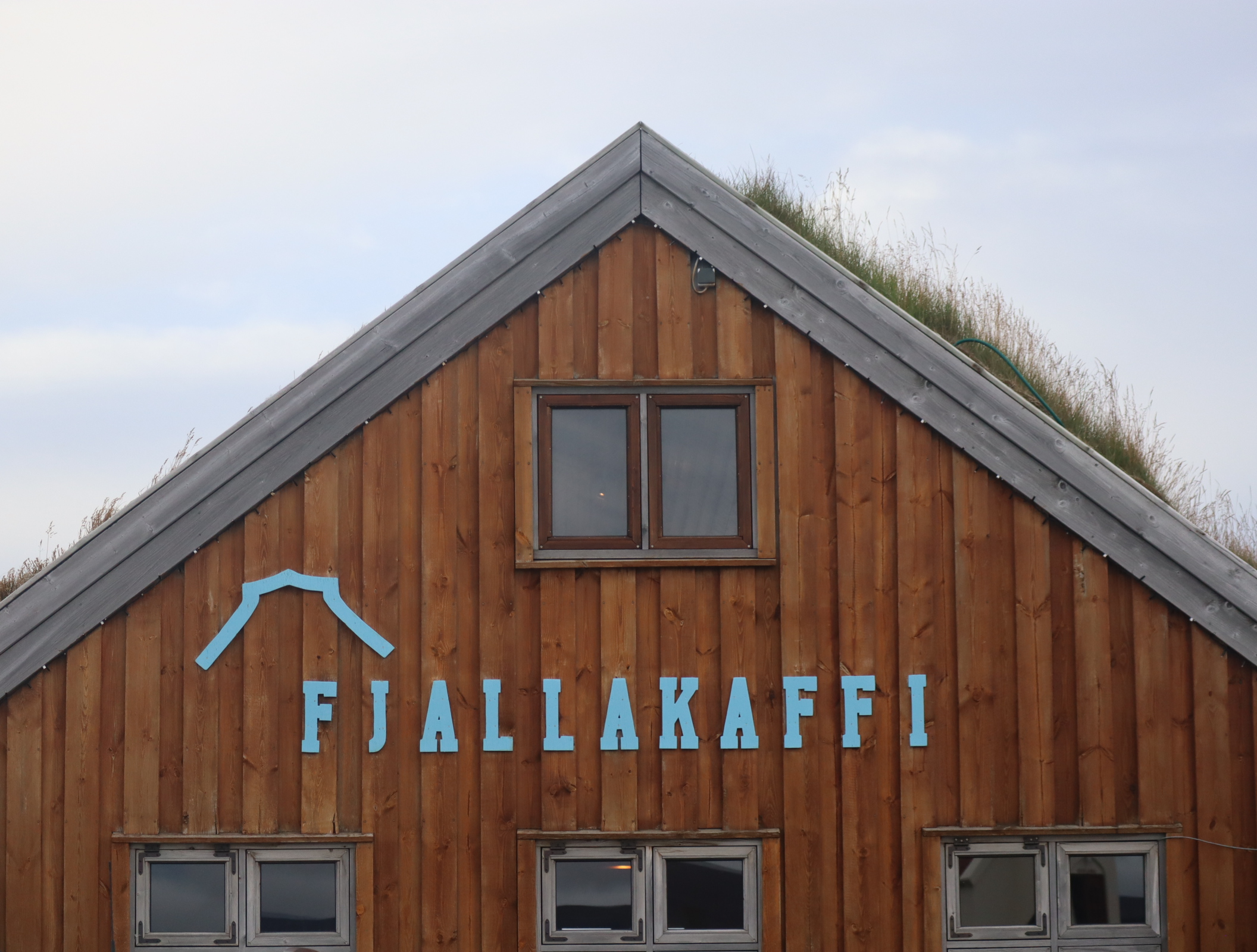
There are also traditional wool sweaters known as a lopapeysu, for sale at the café. I highly recommend purchasing a lopapeysu from a local source in Iceland. They are high quality and will keep that Iceland chill out. Plus you are supporting a local craftsperson!

Across the street from the café is Möðrudalskirkja church, established in 1949 by Jon A. Steffanson. The church was built in memory of his wife Porunn Vilhalmsdottír.

HISTORICAL SIGNIFICANCE
Fjalladyrð is a place of rest, accommodation, and tourist activities located on the active farm of Möðrudalur. It was founded in 1999 by Vilhjamur Vernhardsson and Elisabet Kristjansdottír. The campground was established first, a fenced off grassy area away from the farm’s sheep and horses. Next the historical site of the turf farmstead was developed for accommodations. Through the years the number of turf houses has increased in response to servicing travelers.
It is located in the Northern highlands and within driving distance from popular attractions like Áskja, Lake Mvátn, Ásbyrgi, and Dettifoss. Fjalladyrð offers 4WD highland excursions from the farm where a customer can choose a length of trip and sights they want to see.
Möðrudalur farm is Iceland’s highest settlement sitting 1,539 ft above sea level. From Reykavik you should allow 2-3 days of drive time to reach it so you can enjoy the drive. It has existed since Iceland’s first settlement and farm ruins had been discovered north of the farm in an area that is now protected.
Möðrudalur was also mentioned in the Icelandic saga Saga of Grettir the Strong. I don’t know about you, but for me, there is something special about visiting the saga sites in Iceland! You can read more about this here: https://guidetoiceland.is/connect-with-locals/regina/grettir-the-strong-and-the-troll-in-the-waterfall-a-viking-saga-from-north-iceland
I have also read the farm was once on the ring road (Route 1) but once the ring road moved North, it cut off Möðrudalur. Villi, the son of the farm’s owners, decided he wanted to preserve his ancestor’s farm and built up the place into what it is today, an oasis in the middle of Iceland’s wilderness for travelers. https://fjalladyrd.is/about-us/
ICELAND’S TURF HOUSE
A charming symbol of survival and innovation.
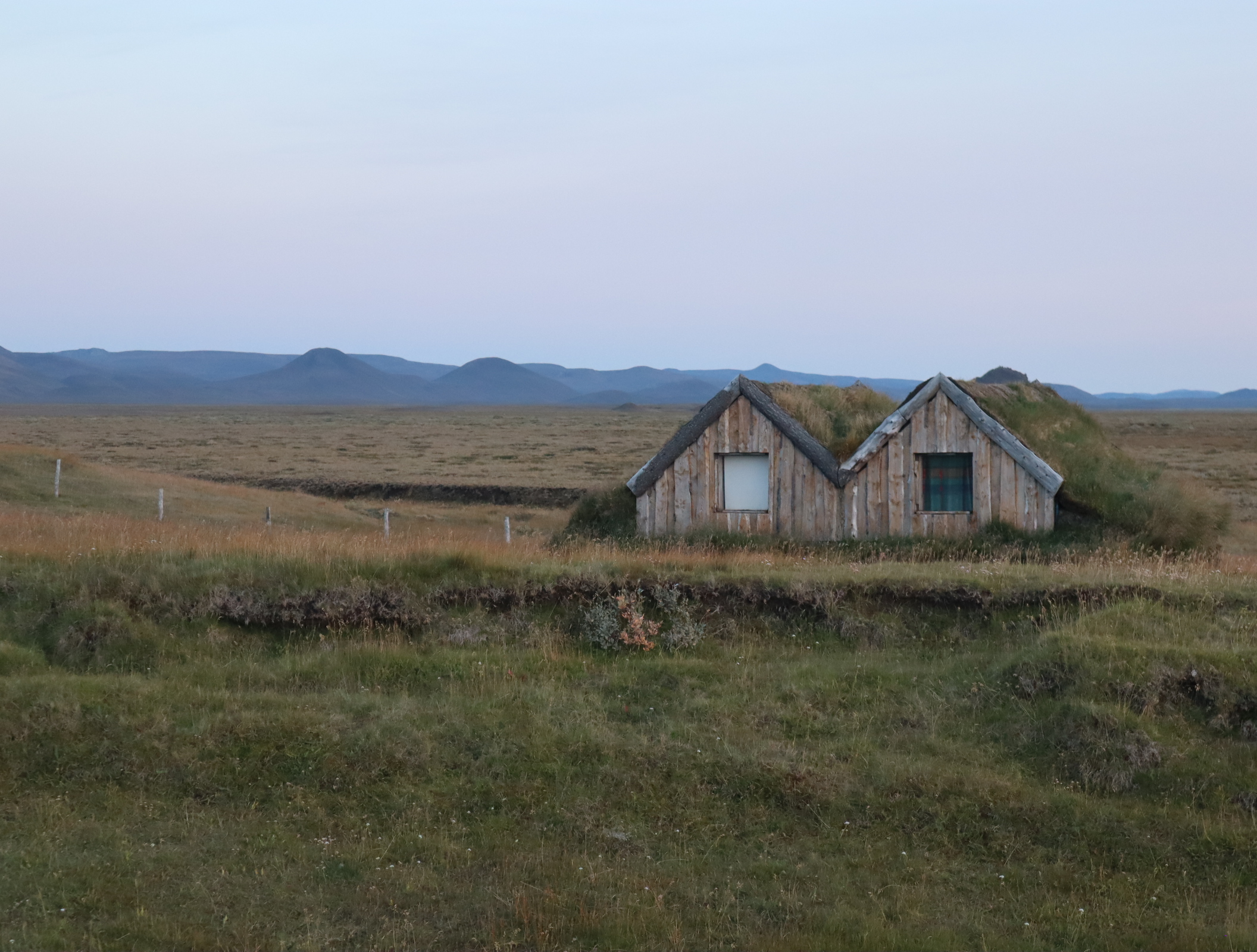
For me, there is no image more Icelandic than a traditional turf style house in Iceland’s wilderness. Turf houses are timber structures with turf walls and a turf roof constructed in 9th century Iceland. They offer superior insulation in harsh climates. The foundation is made of stone. A frame is then placed upon that to load the turf which is fitted in a frame of blocks known as klambra. Besides making for a lovely photography, they speak volumes about what life was like in old Iceland. I highly suggest a visit to the Laufas Museum in the North to tour the inside of an Icelandic turf house. It gives you a real appreciation for the toughness and fortitude of the Icelandic people.
See also my post on The Sorcerer’s Cottage here: https://wordpress.com/posts/anowliniceland.wordpress.com
If you would like to get a real look into a traditional Icelandic turf house, visit the Laufas Museum and Heritage Site in the north
https://www.minjasafnid.is/is/laufas
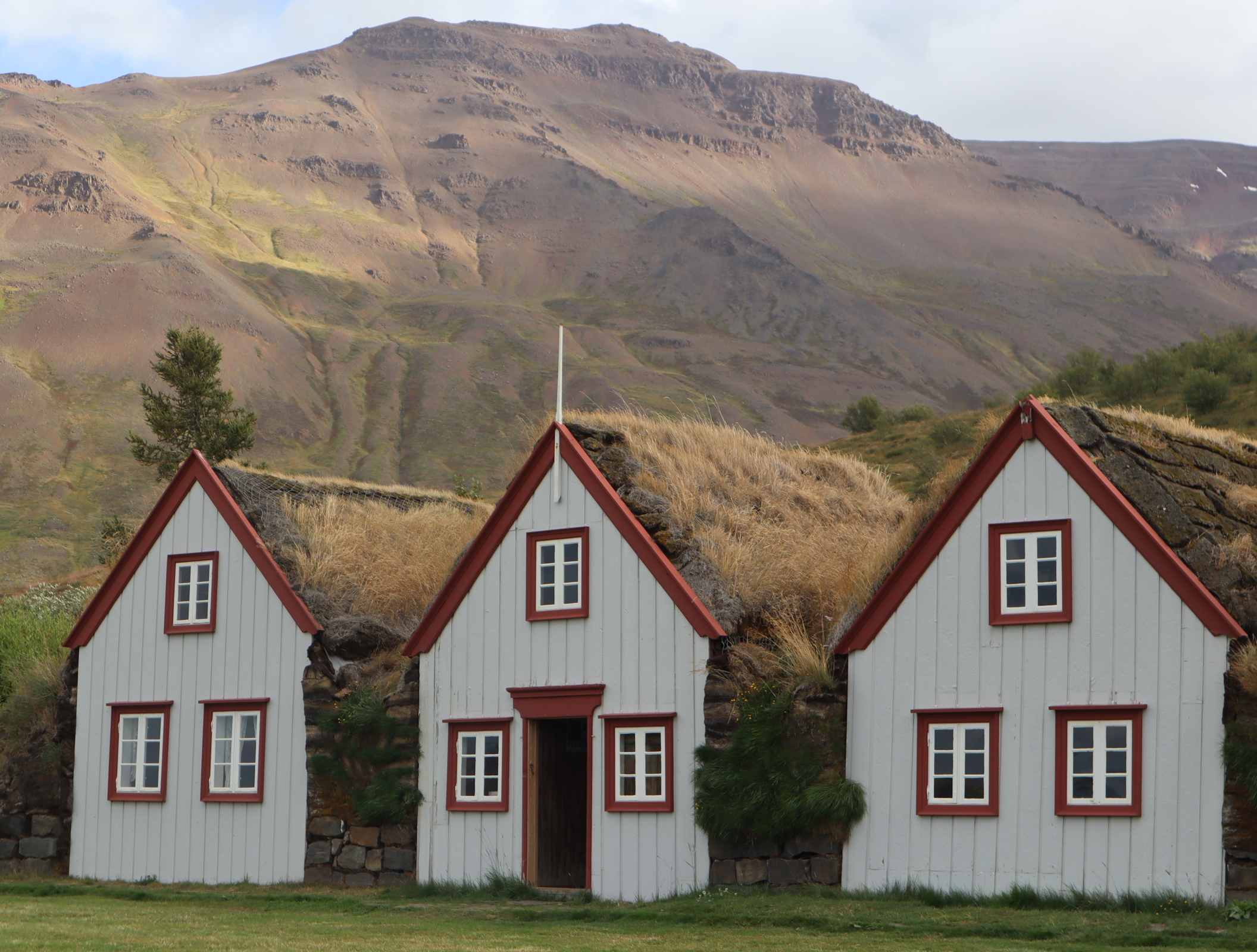
In southeast Iceland near Stokknes, there is a Viking village recreation for a movie set. I have yet to visit there, but it sits not too far from Vestrahorn mountain, the iconic peak featured in many photographs of Iceland.
SUSTAINABALITY
I am a big fan of sustainability. For an island so small, I find Iceland to be big on sustainability and incredibly innovative in conservation, energy sourcing, and preservation.
“Our aim is to be as self-sufficient as possible keeping our environment and the glorious nature our priority while still offering an authentic and personalized experience of life in the highlands.” –statement on Fjalladyrð’s website
Read more here: https://fjalladyrd.is
ACCOMODATIONS
Fjalladyrð offers accommodations for 27 people. More people can stay in the summer when the campground is open. 14 people at a time can stay at a Baðstofa, two traditional houses on the property.
Camping

“Get off the highway, away from it all!” – Fjalladyrð
I may be a bit bias, and I have stayed at many wonderful campsites in Iceland, but this one has to be one of my favorites. The scenery, turf houses, café, and overall feel of the surrounding area makes it for a truly one of a kind experience.
Here is what you need to know for camping:
There is no need to reserve ahead but you are required to check into the reception before camping.
There are showers with hot water for additional 400 IDK krona, clean restrooms, as well as walking trails through the field next to the campground. The campground is level, clean, and also has a small kitchen in a turf house style.
Cost per person is 1590 ISK. Showers were additional 400 ISK. Electricity is 1590 ISK and washing machine use is 1000 ISK.
The website offers several options for an indoor stay including standard rooms, family room in an old turf style house, economy stay, campground cabin, as well as a Fjalladyrð Hostel.
You can read more about the accommodation and book a stay herehttps://fjalladyrd.is/accommodation/
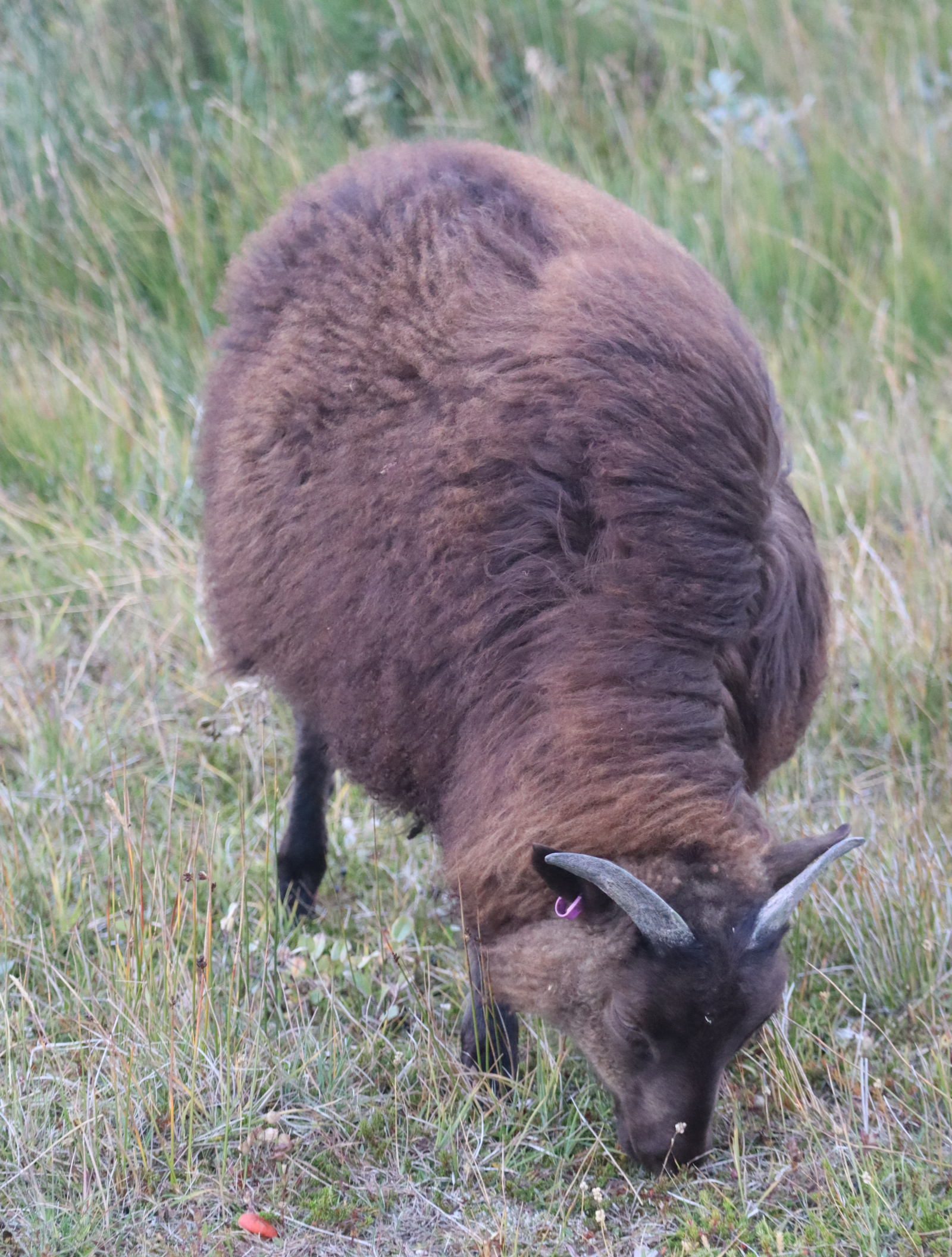
GETTING THERE
Address Möðrudal 660 Mvátn Iceland
From Egilstaðir- drive on ring road 1 for 62 km (paved) and turn left onto road 901 ( Möðrudalsvegur) to drive 30 km on gravel.
From Myvátn
Head northwest and turn right on ring road 1 for 63 km. Turn right on Möðrudalsleið.
GPS coordinates
Latitude: 64° 57′ 50.22″ N
Longitude: 15° 09′ 21.204″ W
Overall my stay in Möðrudalur was memorable and if time allows I hope you find yourself there!
